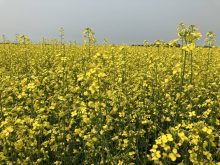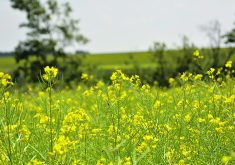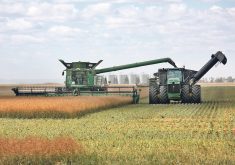Statistics Canada has come under fire by analysts for its canola production and stocks estimates but the agency remains confident in its numbers.
Todd Mulligan, senior crops analyst at Statistics Canada, said the November estimates of crop production are based on a survey covering 26,500 farms.
“We have a lot of confidence because that is an extremely large number of people to call,” he said.
Statistics Canada consults with provincial agriculture officials to verify its estimates. For instance, if farmers in one area report poor yields due to wet conditions it checks to see if that is the case.
Read Also

Critical growing season is ahead for soybeans
What the weather turns out to be in the United States is going to have a significant impact on Canadian producers’ prices
“It’s really a validation for us to (ensure) what we’re seeing, what we’re getting, what we’re computing and what we’re compiling seems to be the way it is,” said Mulligan. “We take every possible measure to ensure the accuracy.”
Many analysts believe the 18.4 million tonne canola estimate for 2016-17 is too low because it does not take into account crop that remained to be harvested this spring.
But Mulligan said the November survey covers that. Every year farmers are asked how much canola came off their fields and how much more they will harvest down the road.
The question is phrased so it doesn’t matter if what remains in the field will be harvested in a week, a month or six months, so it should provide accurate results even in strange conditions like last year when so much of the crop was still in fields at the time of the survey.
“The farmer heard the question and we have to trust that they answered it to the best of their ability,” he said.
Larry Weber, analyst with Weber Commodities, is estimating 18.9 million tonnes of production in 2016-17 but he thinks that is extremely conservative.
He said Statistics Canada’s report has a history of underestimating the size of the canola crop and this year could be worse than usual.
In the past 10 years between the November and final production estimates, StatsCan has underestimated the size of the crop eight times, got it right once and overestimated it once.
On average, StatsCan has underestimated the crop by 634,700 tonnes over that period.
“You have to keep your own S & Ds (supply and disposition reports) for Canada because they’re so inaccurate,” said Weber.
He puts more faith in the U.S. Department of Agriculture’s numbers.
Looking ahead, the USDA forecasts 21 million tonnes of Canadian canola production in 2017-18 versus Agriculture Canada’s forecast of 18.5 million tonnes.
Statistics Canada recently released its March 31 stocks report based on a survey of 11,600 farmers.
It estimates there were 6.6 million tonnes of canola on farms and in the commercial grain handling system at that time, 23 percent below the previous year.
Weber noted that on-farm stocks were down 32 percent in Saskatchewan to 2.3 million tonnes and 25 percent in Alberta to 1.8 million tonnes.
He doesn’t believe that takes into account what remains to be harvested from 2016, which could be up to 2.2 million tonnes based on conversations he had with farmers at dozens of meetings over the winter.
Mulligan said if that is the case, it will show up in the July 31 stocks report when they conduct a supply and disposition of how much canola was crushed, exported and used for other purposes.
“If there is something out of balance there, then we will know,” he said.
“When we add up the different components, the deliveries and total dispositions, that will really tell the tale there.”


















